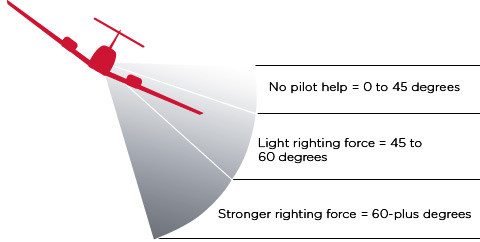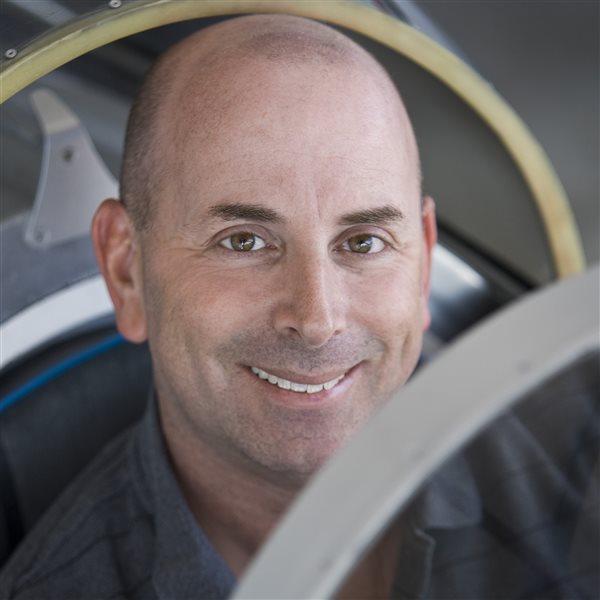Avionics: Garmin's ESP
Cockpit magic: Introducing Garmin's guardian angel
 I’m hand-flying Garmin’s ESP-equipped, Experimental-category Cirrus SR22 into a classic trap: flaps down, idle power, and overshooting a base-to-final turn.
I’m hand-flying Garmin’s ESP-equipped, Experimental-category Cirrus SR22 into a classic trap: flaps down, idle power, and overshooting a base-to-final turn.
As I overbank the aircraft to complete the horror scenario of an impending low-altitude loss of control, Garmin’s ESP system intervenes to break the accident chain. At 45 degrees of bank, the airplane’s side-stick controller pushes back (with an estimated 10 pounds of force) against my errant inputs and smoothly shallows the bank angle to a more manageable 30 degrees.
“ESP is like a good instructor who puts his or her hands on the controls at certain key times to keep you out of trouble,” said Noel Duerksen, the Garmin engineer who developed ESP (Electronic Stability and Protection), which the FAA approved in late November. “It stays in the background until it’s needed.”
With Duerksen in a back seat of the SR22 and Garmin Chief Test Pilot Tom Carr in the right seat, I ignore the ESP hint and intentionally steepen the bank to 60 degrees. ESP exerts an even greater righting force (an estimated 20 pounds of stick pressure)—and wins the arm-wrestling match, reducing the bank angle to 30 degrees again. I can overpower ESP if I insist, but it takes effort. The same is true in extreme pitch attitudes (up or down), and high-angle-of-attack scenarios. ESP senses the impending trouble and nudges the flight controls until the airplane is back in its normal envelope. The correction is applied smoothly at first, and gets progressively heavier and more urgent if the excursions continue. When the pilot applies corrective controls, however, ESP offers no resistance and the airplane’s hand-ling qualities are unaffected.
Exactly when ESP kicks in, and how forcefully, is up to new aircraft manufacturers to decide. Garmin won FAA approval for ESP in the Hawker Beechcraft King Air 200, and approvals for additional aircraft are in the works. (ESP can be disabled on the AUX page for training flights with intentional stalls and steep turns, but ESP returns on the next power cycle.) ESP is automatically enabled above 200 feet agl (and disabled below) so that it doesn’t interfere with takeoffs or landings.
ESP is a software upgrade for new G1000- and G3000-equipped airplanes, and it operates through the air data computers, AHRS, and autopilot servos in the integrated avionics suites. Aircraft manufacturers also may sell ESP as a retrofit for some G1000 airplanes, but as with other products, Garmin won’t sell directly to customers. (Garmin also has developed a series of autopilot upgrades for the G1000 that will be addressed in a separate article.)
Duerksen designed the ESP system to “enhance an aircraft’s natural stability,” and it mimics the envelope protection systems in advanced, fly-by-wire jets such as the Boeing 777 and the Falcon 7X. In those aircraft, control forces are light and crisp in the normal range but get progressively heavier as pitch and bank angles exceed certain predetermined limits.
ESP does the same thing with mechanical controls. It stays out of the way when the airplane is flown in the middle of the flight envelope, intervenes subtly as the pilot begins to stray, and gets progressively more forceful as the airplane nears the critical angle of attack, or VNE. (ESP only operates when the pilot is hand-flying, and it plays no role when the autopilot is engaged.) In a situation such as a steep spiral, where the airplane exceeds both bank and airspeed limits, ESP corrects both simultaneously.

During a demonstration flight at Garmin’s product test and development center in Olathe, Kansas, Carr set up a spiral scenario: high-cruise power, uneven aileron trim, and the pilot’s hands and feet off the controls. As the airplane banked left, ESP engaged at 45 degrees and righted the aircraft to 30 degrees. As the airspeed increased to the preset limit of 185 KIAS, ESP raised the nose and the airplane began a shallow climb.
With no pilot intervention, the airplane performed a strange, oscillating dance as it circled to the left, alternately climbing and descending in a 30-degree bank. After 20 seconds, the automatic autopilot engagement feature kicked in with an aural callout of “engaging autopilot,” and commanded straight-and-level flight.
Duerksen, a CFII (and Ph.D.), began designing automatic safety features in GA airplanes in the 1990s when he helped develop a fly-by-wire Bonanza as part of NASA’s AGATE program. That airplane, which sported a distinctive striped paint scheme, flew successfully with a digital fly-by-wire system, but no commercial GA manufacturers adopted the technology that has become widely accepted on airline and military aircraft.
During my demonstration flight in the ESP-equipped SR22, I looked for, and expected to find, scenarios in which the pilot and well-intentioned technology would wrist-wrestle for control of the aircraft, but I was unable to find any. The technology stays completely out of sight and out of mind during normal flight and only makes its presence felt at the fringes. And when it does show up, it does so in a way that’s smooth and reassuring, not jerky or alarming. There are no red lights, alarms, or annunciations.
It really does feel like an old flight instructor, or a guardian angel, is there in the cockpit to guide the airplane back from the brink. The ESP-equipped SR22 looks and flies just like every other SR22, and the invisible safety technology built into its flight control system does nothing to detract from its already well-defined character.
“It’s been said that ‘any sufficiently advanced technology is indistinguishable from magic,’” Duerksen said, citing futurist Arthur C. Clarke. “We like to think we’ve captured a little bit of that magic in a system that works with the pilot to enhance the natural stability of the aircraft. ESP stays in the background unless it’s absolutely necessary—and even when it intervenes, it does so in a way that’s as unobtrusive as possible.”
E-mail the author at [email protected].



